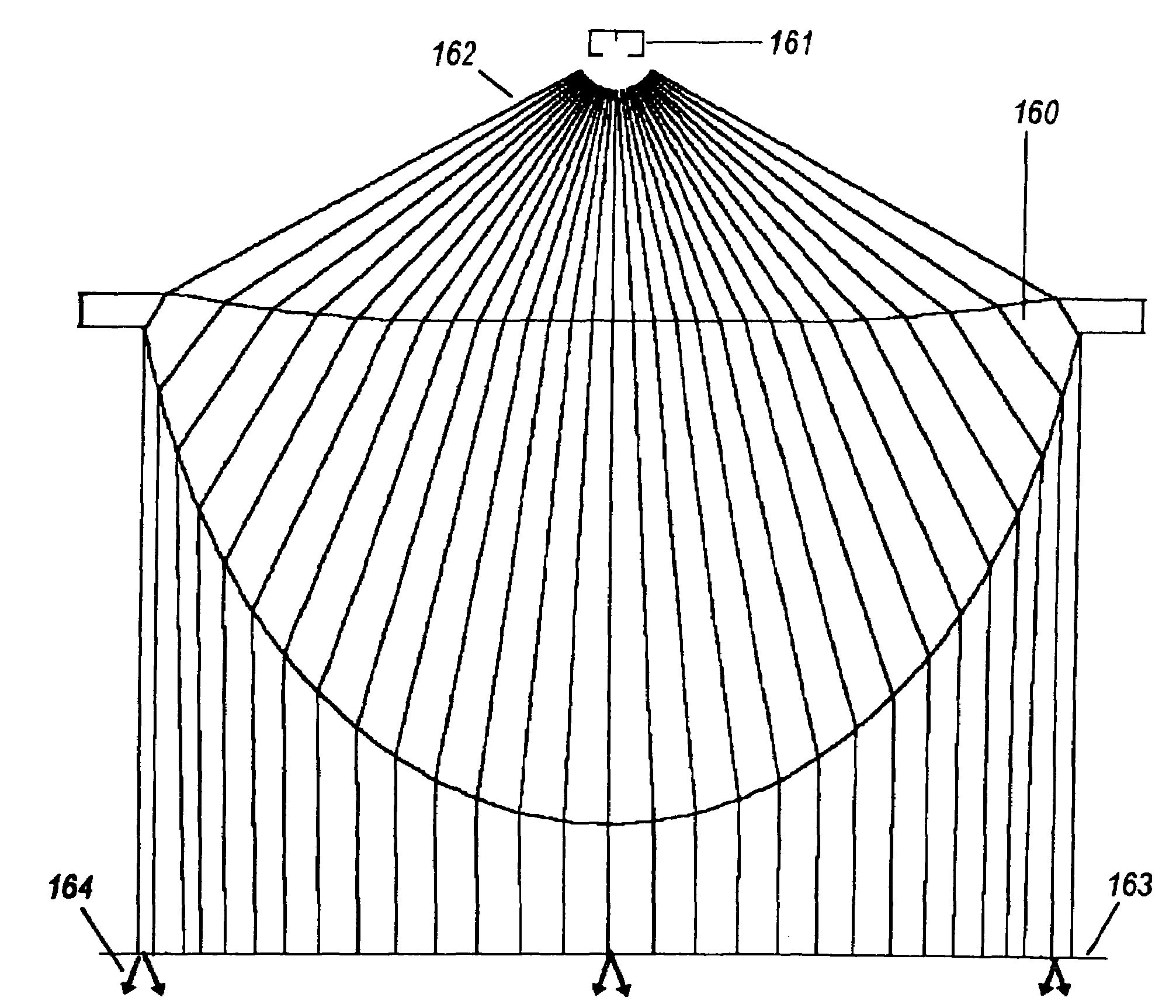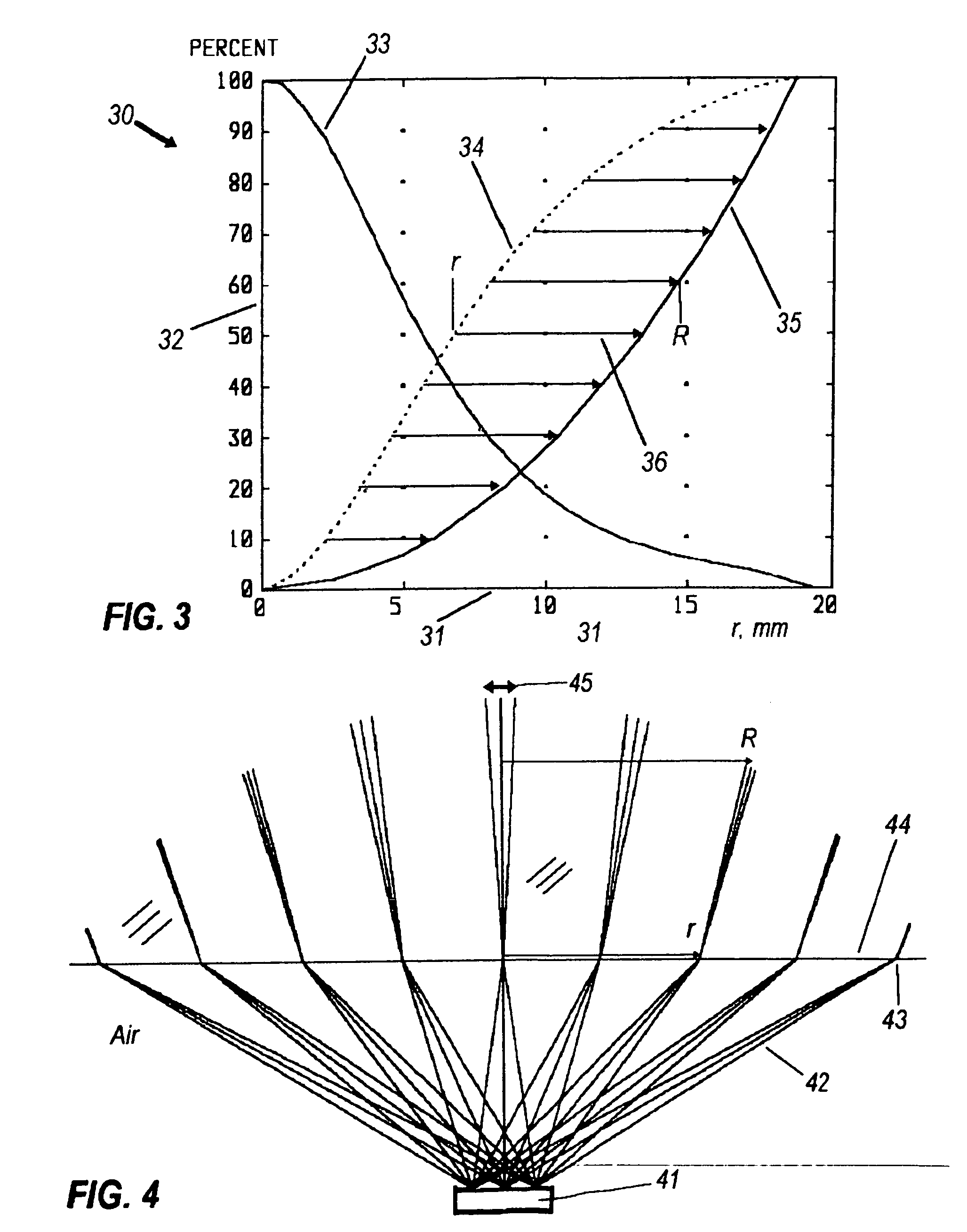Irradiance-redistribution lens and its applications to LED downlights
a technology of irradiance-redistribution and led downlight, which is applied in the direction of instruments, lighting and heating apparatus, semiconductor devices for light sources, etc., can solve the problems of expensive and bulky projection lamps that cannot produce square light beams, and conventional led optics that do not provide uniform output and high directionality for led downlights
- Summary
- Abstract
- Description
- Claims
- Application Information
AI Technical Summary
Benefits of technology
Problems solved by technology
Method used
Image
Examples
Embodiment Construction
[0031]A Lambertian light source presents constant luminance at all angles, so that off-axis foreshortening of its flat output aperture gives a cosine dependence of intensity. Actual LED chips can differ from this ideal pattern. FIG. 1, as an example, shows intensity graph 10 with horizontal angular scale 11 and vertical scale 12 showing relative intensity. Curve 13 is the measured output of the Flash-LED made by the Lumileds Corporation. For comparison, curve 14 graphs the cosine dependence of a perfectly Lambertian emitter, showing that curve 13 may be called ‘sub-Lambertian’, in spite of horizontal branch 13h. This latter feature is due to lateral leakage out of the top of the Flash package.
[0032]An important feature of an intensity distribution is the cumulative flux distribution, defined as the normalized angular integral of the intensity I(θ):
J(ψ)=0┌ψI(θ)sin θdθ / 0┌90I(θ)sin θdθ
Curve 15 graphs this function, showing that 90% of the flux lies within 63° of the axis, a solid angle...
PUM
 Login to View More
Login to View More Abstract
Description
Claims
Application Information
 Login to View More
Login to View More - R&D
- Intellectual Property
- Life Sciences
- Materials
- Tech Scout
- Unparalleled Data Quality
- Higher Quality Content
- 60% Fewer Hallucinations
Browse by: Latest US Patents, China's latest patents, Technical Efficacy Thesaurus, Application Domain, Technology Topic, Popular Technical Reports.
© 2025 PatSnap. All rights reserved.Legal|Privacy policy|Modern Slavery Act Transparency Statement|Sitemap|About US| Contact US: help@patsnap.com



